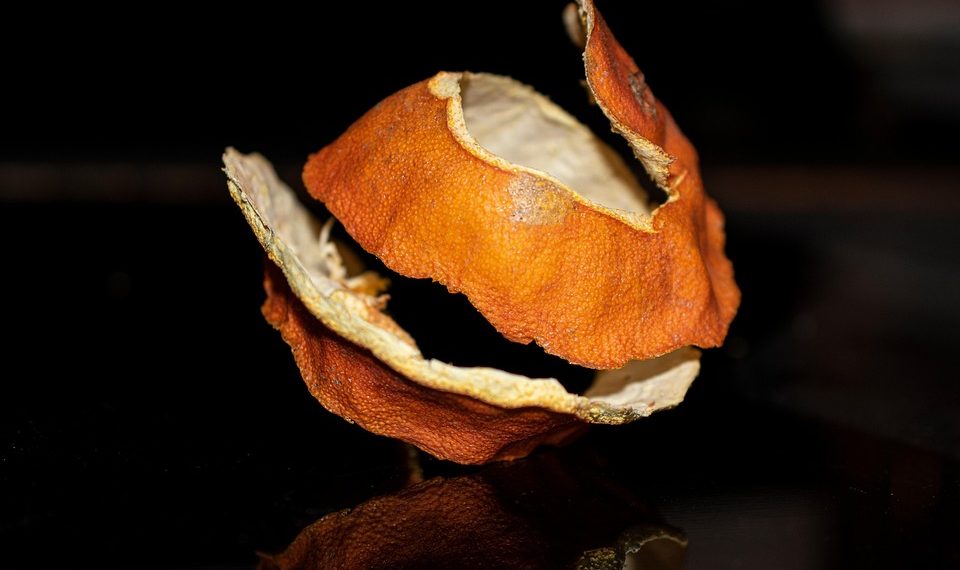Did you know that the humble orange peel, often tossed aside as kitchen waste, might hold some surprising benefits for managing blood sugar? It’s true! While we often enjoy the sweet, juicy flesh of the orange, the peel is packed with nutrients and compounds that can play a significant role in blood sugar regulation. Let’s dive into five unexpected benefits of orange peel for blood sugar control that might just make you rethink how you handle your next citrus snack.
Contents
1. Rich in Flavonoids
One of the standout features of orange peel is its high flavonoid content, particularly hesperidin. Flavonoids are plant compounds known for their antioxidant properties, and hesperidin has been shown to improve insulin sensitivity.
What Does This Mean for Blood Sugar?
Improved insulin sensitivity means that your body can use insulin more effectively, leading to better blood sugar control. A study published in the Journal of Agricultural and Food Chemistry found that hesperidin can help reduce blood sugar levels and improve lipid profiles in diabetic rats. While more research is needed in humans, these findings are promising!
Pros and Cons
- Pros: Natural source of antioxidants, may improve insulin sensitivity, easy to incorporate into your diet.
- Cons: Individual responses can vary, and excessive consumption might lead to digestive discomfort.
2. High Fiber Content
Orange peels are a fantastic source of dietary fiber. Fiber plays a crucial role in blood sugar management by slowing down the absorption of sugar into the bloodstream.
The Fiber Factor
When you consume fiber, it helps to stabilize blood sugar levels, preventing those dreaded spikes that can occur after a meal. According to the Mayo Clinic, a diet rich in fiber can help control blood sugar levels, making orange peel an excellent addition to your diet.
How to Use It
You can add grated orange peel to smoothies, salads, or even baked goods. Personally, I love tossing a bit of zest into my morning oatmeal for a citrusy kick!
Pros and Cons
- Pros: Supports digestion, helps regulate blood sugar, versatile in recipes.
- Cons: Some people might find it too bitter; it’s best to start with small amounts.
3. Contains Essential Oils
The essential oils in orange peel, particularly limonene, have been studied for their potential health benefits. Limonene has anti-inflammatory properties and may also help reduce insulin resistance.
A Natural Anti-Inflammatory
Chronic inflammation is a significant factor in the development of insulin resistance, which can lead to higher blood sugar levels. By incorporating orange peel into your diet, you might be able to tap into these anti-inflammatory benefits.
Practical Tip
Try infusing water with orange peel for a refreshing drink that not only hydrates but also provides some of these beneficial oils. It’s a simple way to enhance your hydration routine!
Pros and Cons
- Pros: Natural anti-inflammatory effects, adds flavor to dishes, easy to incorporate.
- Cons: Essential oils should be used in moderation, as concentrated amounts can be too strong for some.
4. Lowers Glycemic Index of Foods
Adding orange peel to meals can help lower the glycemic index (GI) of certain foods. The glycemic index measures how quickly a food raises your blood sugar levels after consumption.
The Science Behind It
When you combine high-GI foods with fiber-rich orange peel, the overall GI of the meal decreases. This means your body will experience a slower rise in blood sugar levels. A study highlighted in the American Journal of Clinical Nutrition suggests that combining fiber with carbohydrates can lead to improved blood sugar control.
A Simple Application
Next time you’re enjoying a meal, think about adding some grated orange peel to your dish. It’s an easy way to enhance flavor and improve blood sugar stability.
Pros and Cons
- Pros: Helps mitigate blood sugar spikes, enhances flavor, easy to add to various dishes.
- Cons: May require experimentation to find the right balance of flavors.
5. Supports Gut Health
The benefits of orange peel extend beyond blood sugar control; they also support gut health. A healthy gut microbiome has been linked to better blood sugar regulation.
The Gut Connection
Research indicates that a diverse gut microbiome can improve insulin sensitivity and reduce the risk of type 2 diabetes. The fiber in orange peel acts as a prebiotic, feeding the beneficial bacteria in your gut. A study in the Journal of Nutrition found that prebiotics can enhance metabolic health, including blood sugar regulation.
How to Boost Your Gut Health
Consider making orange peel a regular part of your diet to support not just your blood sugar levels but overall gut health. You could try making a homemade tea by boiling orange peels in water for a soothing drink that’s also gut-friendly.
Pros and Cons
- Pros: Supports overall health, promotes a balanced gut microbiome, enhances nutrient absorption.
- Cons: Some may experience bloating or digestive discomfort if they suddenly increase fiber intake.
FAQs
1. Can I eat orange peels raw?
Absolutely! Just make sure to wash them thoroughly to remove any pesticides or wax. You can eat them raw, but many people prefer to grate them into dishes for added flavor.
2. How can I incorporate orange peel into my diet?
There are many ways! You can add grated peel to smoothies, salads, baked goods, or even infuse water. The options are endless, and it adds a nice citrusy flavor.
3. Are there any risks associated with eating orange peel?
While eating orange peel is generally safe, some people may experience digestive discomfort if they consume too much fiber too quickly. It’s best to start with small amounts and see how your body reacts.
4. Is there any research on orange peel and blood sugar control?
Yes! Several studies suggest that compounds in orange peel, like flavonoids and fiber, can improve insulin sensitivity and help regulate blood sugar levels. However, more research is needed to fully understand the effects in humans.
Conclusion
The next time you peel an orange, consider saving that peel instead of tossing it in the trash. With its wealth of nutrients and potential benefits for blood sugar control, orange peel is a powerhouse that deserves a spot in your diet.
While research is ongoing, the evidence so far suggests that incorporating orange peel can lead to improved insulin sensitivity, better gut health, and more stable blood sugar levels. So why not give it a try? You might just discover a new favorite ingredient that not only enhances your meals but also supports your health in surprising ways.
Remember, though, this article is for educational purposes only and is not a substitute for professional medical advice. Always consult a qualified healthcare provider before making changes to your health routine.
References
-
Chen, Y., & Xu, J. (2018). Hesperidin improves insulin sensitivity and lipid metabolism in diabetic rats. Journal of Agricultural and Food Chemistry, 66(34), 8908-8915. https://pubs.acs.org/doi/10.1021/acs.jafc.8b03227
-
Slavin, J. (2013). Fiber and prebiotics: mechanisms and health benefits. Nutrients, 5(4), 1417-1435. https://www.mdpi.com/2072-6643/5/4/1417
-
Venn, J. R., & Mann, J. I. (2004). Cereal grains, legumes and diabetes. Diabetes Care, 27(4), 1202-1203. https://care.diabetesjournals.org/content/27/4/1202
-
Mayo Clinic. (n.d.). Dietary fiber: Essential for a healthy diet. https://www.mayoclinic.org/healthy-lifestyle/nutrition-and-healthy-eating/in-depth/fiber/art-20043983
-
Harvard Health Publishing. (n.d.). The importance of dietary fiber. https://www.health.harvard.edu/staying-healthy/the-importance-of-dietary-fiber
Get Your FREE Natural Health Guide!
Subscribe now and receive our exclusive ebook packed with natural health tips, practical wellness advice, and easy lifestyle changes — delivered straight to your inbox.














